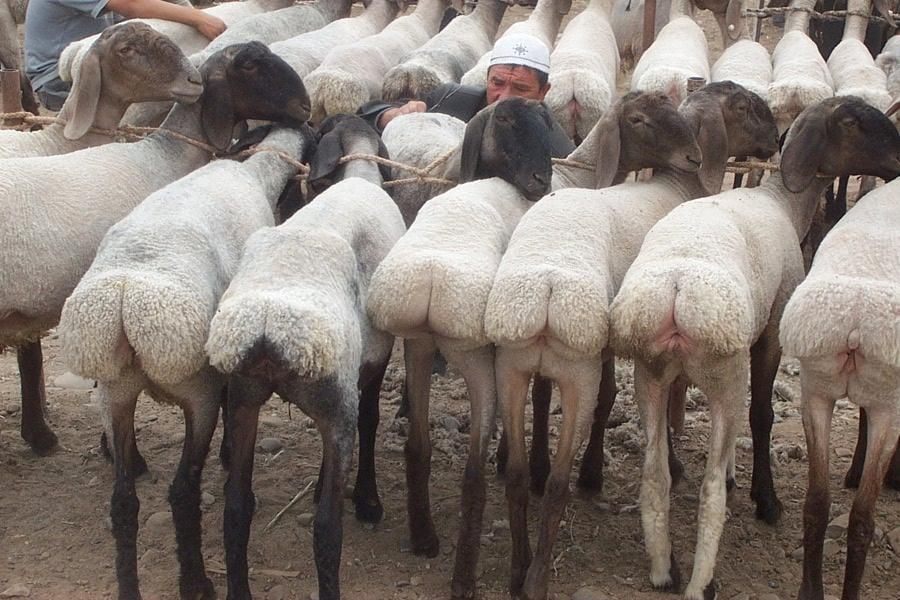Researchers Recover DNA From 1,600-Year-Old, Naturally Mummified Sheep Leg
The molecules offer insights on ancient farming practices near the Chehrabad salt mine in Iran
:focal(713x445:714x446)/https://tf-cmsv2-smithsonianmag-media.s3.amazonaws.com/filer/f8/6b/f86b1e02-c35a-44eb-b26b-0cbb6d0b5b5c/270489_web.jpg)
In the fifth or sixth century A.D., hungry workers in Iran probably gnawed on a sheep leg, then chucked their leftovers into the salt mine where they were working. Some 1,600 years later, researchers performed a DNA analysis of the limb, peeking into the past and shedding light on an ancient civilization’s sheep husbandry practices. The findings were published last week in the journal Biology Letters.
The mine’s saline environment naturally mummified the sheep leg, reports Nicoletta Lanese for Live Science. Salt removes water from biological specimens, preserving soft tissues that would otherwise decay due to microbial activity.
This isn’t the first time that extraordinarily well-preserved biological specimens have been found at the Chehrabad salt mine: Between the 1990s and early 2000s, a different group of researchers discovered the ancient remains of eight similarly desiccated humans. Dubbed the “Salt Men” (although they included one woman, too), some of these 1,300- to 2,500-year-old historical specimens still boast head and facial hair.
For the study, the team extracted DNA from a skin sample cut from the sheep’s leg. Thanks to the salt, the sheep’s DNA molecules were “so well preserved and not fragmented, despite their age,” says senior author Kevin Daly, a research fellow at the Smurfit Institute of Genetics at Trinity College Dublin, to Live Science.
Normally, DNA in a carcass is quick to disintegrate, as the animal cells’ enzymes degrade the strands by splitting the chemical bonds with water. But salt sequesters water molecules, rendering them unavailable for these chemical reactions. Daly’s team also found DNA aplenty from salt-loving bacteria and archaea, both of which probably helped preserve the sheep leg.
The sheep’s DNA profile revealed that it was genetically similar to the breeds that populate Southwest Asia today. According to a statement, the result implies that modern sheep may be directly descended from this ancient cattle variety.

As Tom Yun reports for CTV News, the earlier animal probably looked quite different from the contemporary sheep now living in North America. It lacked the gene for a woolly coat, instead bearing the gene variant for a hairy one. On top of the DNA analysis, nanoscale imaging of the sheepskin’s hair fiber confirmed that its coat was the shorter kind that didn’t require shearing.
These results point to a fat-tailed breed; though these sheep lack fleece, they have fat in their tails that makes their hinds look particularly perky. The researchers suggest that this ancient sheep breed was probably raised for meat or milk production, much like the fat-tailed livestock living in present-day Iran, northern Africa and parts of Asia.
“This study shows us that the people of Sasanian-era Iran may have managed flocks of sheep specialized for meat consumption, suggesting well developed husbandry practices,” says Daly in the statement.
The researchers caution that this specimen is just a single individual, making it difficult to draw definitive conclusions about ancient sheep domestication in the region.
Still, the study highlights how the mundane act of eating—and the diners’ table manners—can be accidentally preserved for posterity, all thanks to the fortuitous environment where the meal took place.
“We weren’t expecting to see that level of preservation,” lead author Conor Rossi, a geneticist at Trinity College Dublin, tells Live Science. “This site is something truly remarkable.”
/https://tf-cmsv2-smithsonianmag-media.s3.amazonaws.com/accounts/headshot/kim.png)
/https://tf-cmsv2-smithsonianmag-media.s3.amazonaws.com/accounts/headshot/kim.png)